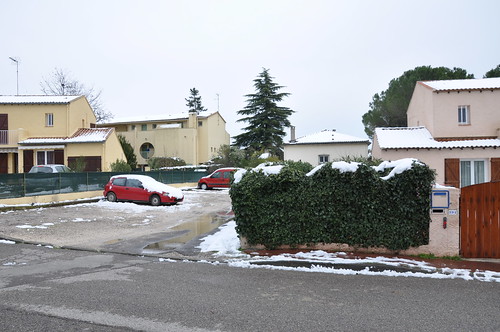ISAW Visit
Last week I made my first 2010 trip to the Institute for the Study of the Ancient World at New York University for a workshop with researchers and programmers from the University of Heidelberg's Epigraphische Datenbank Heidelberg. The stuff I work on daily is only a fraction of ISAW's digital projects, which are in turn only a fraction of ISAW's business. I had a day before the workshop to catch up with what's going on in the ISAW library and exhibition groups.
But first I had to fly across the Atlantic in this A380, which flies as smoothly and quietly as advertised.
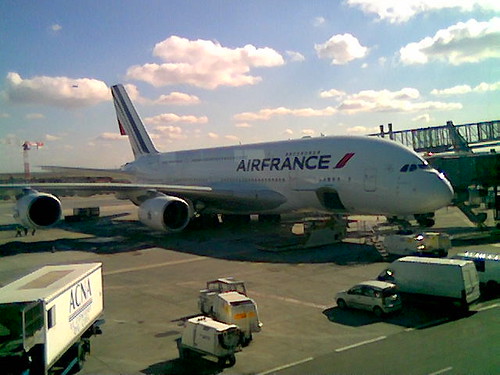
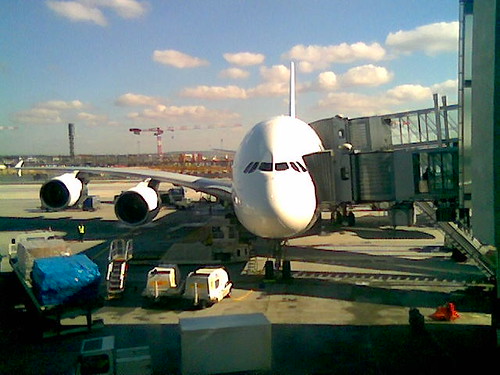
I shared a row with a retiree from Avignon. His US-based kids were flying him to NYC and then Aspen for his 60th birthday. We talked about the food and geography of France and the Southwest US – Mexican cuisine in particular, which I've been craving and he'd discovered on a previous trip to Colorado, Utah, and Arizona. I heard French on the street in New York, and among visiting scholars at ISAW, but that would be the last French I'd speak for a week.
Next is a crappy mobile phone photo of one of the fine banners ISAW put up on the Museum Mile (ISAW is just half a block east of 5th Ave on 84th Street) to advertise the Old Europe exhibit.
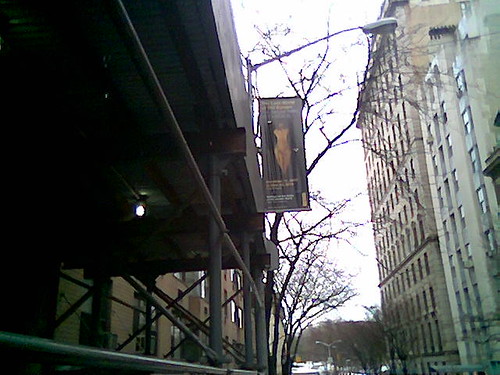
In this context, "Old Europe" refers to a largely forgotten Neolithic and Copper Age culture established along the Danube River during a wave of emigration from Anatolia that also settled the Aegean islands and what are now Macedonia and Greece (see also Cucuteni-Trypillian culture). The objects in the exhibition are from museums in Bulgaria, Moldova, and Bulgaria, and are being shown in the US for the first time. Here's a nice Flickr photo set made by an exhibit visitor:
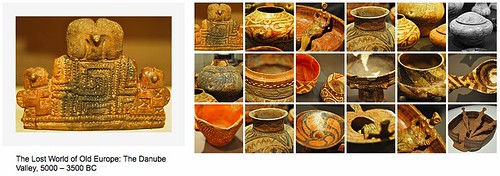
The Metropolitan Museum of Art has nothing from this culture, but does have a collection of almost contemporary Early Cycladic objects.
The exhibit is very well done, widely reported and well reviewed in the local media, and well attended. Chapeau to Jennifer Chi and the exhibition team. There's a nice catalog book edited by David W. Anthony with chapters that dive deeper into the archaeology and history of the culture. The exhibits and digital projects groups have a bunch of ideas of how to improve the integration of physical, print, and web materials for upcoming exhibits as we roll out the new ISAW website. The catalog has some great maps by Brian Turner from UNC's Ancient World Mapping Center (where I worked previously) but I think a KML application could take the geography to another level. The exhibit runs through April 26 after which you'll have to travel to Southeastern Europe to see these objects.
I met ISAW's newest technical people, Michael Edgcumbe (who keeps the wheels on office computing) and Christopher Warner (lead on the new website), in person for the first time. The workshop went well, too. More about that later after I push new code up to our site.
While packing for the return trip, I heard that I'd be coming back to snow. Indeed: when we descended below the clouds I saw Montpellier and much of the Hérault department covered with snow. We got about 10 cm in the neighborhood, some of which remains to be seen in the photo below:
